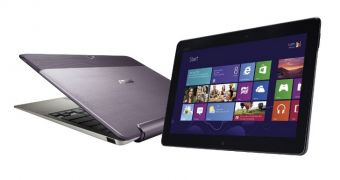Windows 8 is available and, with it, many tablets, notebooks, desktop PCs and all-in-one systems have been launched, the majority of which feature multitouch panels. This might become a problem.
There used to be a time when touch support on laptops, monitors and all-in-one PCs was considered counterintuitive.
Now that it isn't all that expensive to include touch input, notebooks have been getting away with integrating such functionality more easily.
Touch-enabled All-in-One PCs and monitors are still strange though. After all, it isn't very comfortable to keep holding one's arms out to manipulate such things.
Nevertheless, all the AiO PCs and many of the monitors released over the past couple of months have touchscreens, at least as an option.
Now we get to discover the downside of all this: the rise in touch controller and panel orders has caused shortages.
It doesn't help that a chemical plant from Japan, which made thin-film type touch screen materials, suffered an explosion recently.
So far, Apple, Microsoft and Samsung Electronics are having trouble amassing sufficient touch panels for their tablets.
Samsung actually doubled its orders for touchscreen resources, in order to force competitors to fight over the remaining supply. At least, that is what a Digitimes report claims.
The shortage, currently at 30%, will last until the end of the year. All in all, it might take a while longer than Intel thinks for the entire PC industry to become touch-enabled.
For those who don't know, Intel said, the other day, that it fully expects it to be difficult, a year from now, for notebooks to sell without touch panels.
Seeing as how tablet shipments alone are causing material shortages right now, the supply chain will have to be very active over the next months in order to let that prediction become true. Whether monitors and AiOs scrounge up enough for themselves remains to be seen.

 14 DAY TRIAL //
14 DAY TRIAL //